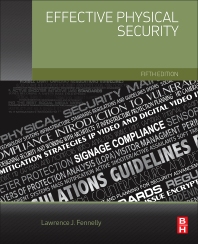With a world full of acquisitions, divestitures, mergers and business changes, such circumstances create complex environments for businesses and organizations in many ways, particularly as those organizations want to connect data and security in a single concentric view. For security integrators, solving those client needs through open standards enable integration and interoperability on a level that otherwise would be too cost prohibitive or complex to achieve, Jason Ouellette, senior director of technology business development for security products at Tyco, part of Johnson Controls, Milwaukee, Wisc. told SDM.
Enter the Physical Security Interoperability Alliance (PSIA) and its Physical Logical Access Interoperability (PLAI) specification. PSAI formed in 2008 with a mission of open standards within the physical security industry.
With a live zoom meeting in May, PSIA and several other partner companies in access control and biometrics demonstrated the way a cloud-based PLAI agent can connect five physical access control systems (PACS) and two biometric systems relying on a single source to creates a PACS interoperability environment that allows an organization with disparate security systems to utilize identity data across locations and systems seamlessly.
PSIA began planning in mid-2019 and originally planned to showcase the event in-person at ISC West in April, but quickly adjusted to a live online demo amid the tradeshow cancellation. The demo involved a group of eight partner companies, including Cruatech, JCI/Tyco (Johnson Controls), LenelS2, AMAG, Monitor Dynamics, Idemia, Eyelock and Siemens. Attendees got to see not only the main PLAI dashboard with products synchronizing identity data, but also each participant’s product performing after authentication. Each product was in a separate location, with companies in Europe and the United States included.
The main PLAI dashboard works to synchronize identity data across systems all at once. Relevant employee data from HR systems to physical access control systems can be shared. One of the main benefits for security integrators and their customers is the normalization of data that happens across the enterprise, no matter the number of locations or systems.
As long as the systems are on the same version of the specification, they can work together to share that data and it gets rid of a huge problem many organizations have of keeping their credentials, access control and security data, clean and formatted. When information is added, deleted or changed by the main agent in the PLAI scenario, for example, it is updated across all involved systems, allowing employees to have seamless and up-to-date access organization wide.
“A major pain point is often such integrations can lead to poor data over time as different systems add or delete or change credentials,” Ouellette said. He added that open standards are also beneficial as security integrators can work with existing customers or existing locations to implement a level of interoperability without having to rip and replace all systems. “It can be a huge cost savings over an expensive PSIM,” he said.
In the case of identity credentials, for example, standardization allows for employees with locations in multiple buildings or multiple countries to have appropriate access at each location, as well as allows companies with multiple disparate systems to standardize access and futureproof for growth, acquisitions and other changes.
“PLAI can facilitate integration end to end for locations across the world that have disparate systems that you want to update access too,” Ouellette said. “The PLAI specification provides a foundation and standard approach to be able to share a number of things that have been notoriously proprietary in the security industry. The value of PLAI simplifies complexity of various proprietary systems and specifications, takes away version challenges and maximizes integration.”
Visit www.psialliance.org for more information.




